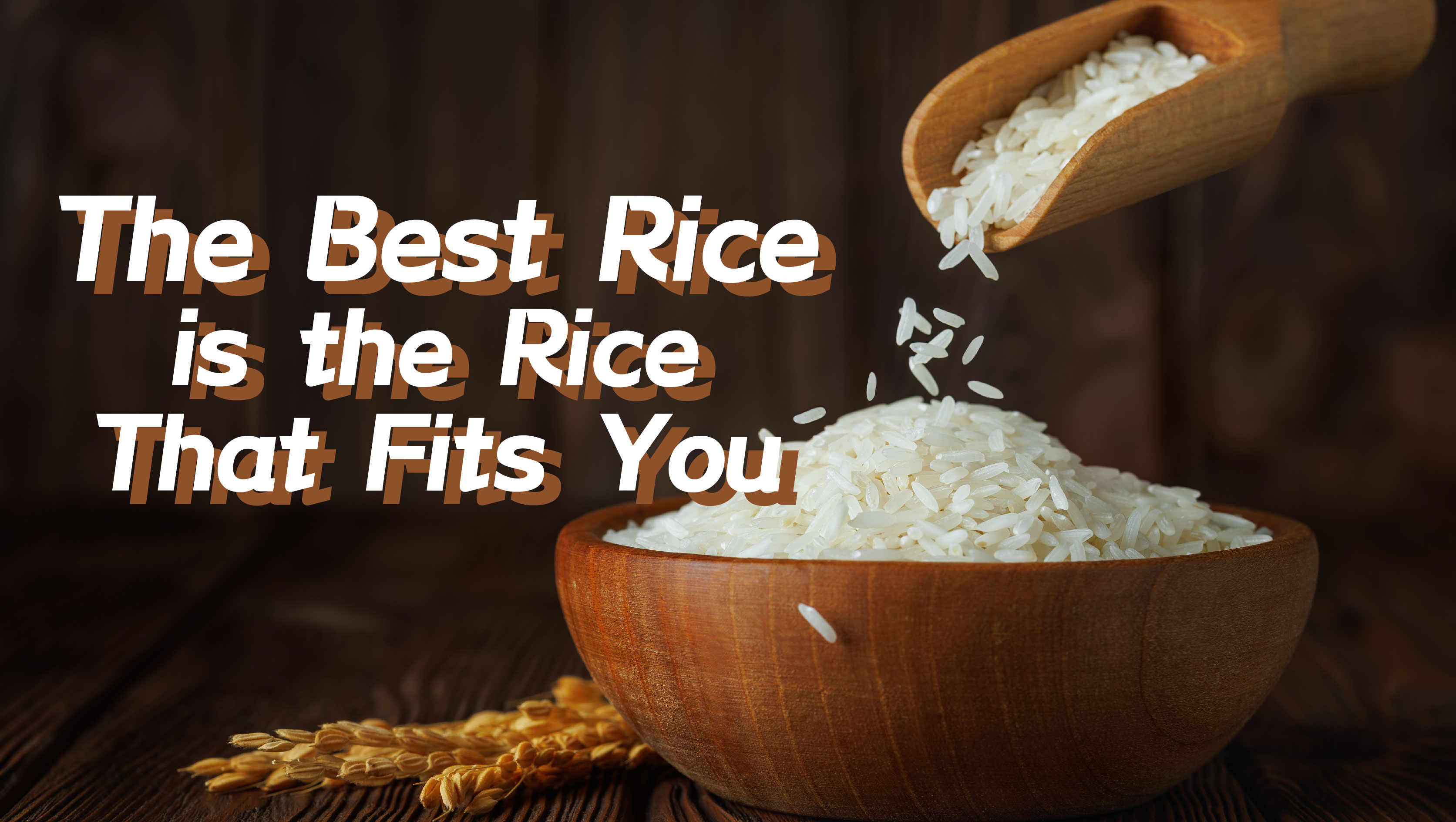20 February 2025
Rice is one of the most common staples on our dining tables, forming an essential part of many meals. For many of us, rice has been a daily companion since childhood, and a meal often feels incomplete without it. Do you feel the same? Since rice plays such a vital role in our lives, let’s take a closer look at how to choose the best type for you.

Let’s start by understanding the structure of rice. The outermost layer of rice is called the husk, which protects the grain but is not edible. Beneath the husk lies the bran, which is rich in fiber, B vitamins, and minerals. At the core of the grain is the endosperm, which mainly contains starch and protein. Lastly, the germ is where you find B vitamins, vitamin E, and other nutrients.
Brown rice, germ rice, and white rice that commonly seen in stores are all come from the same “grain.” Brown rice has the husk removed but keeps both the bran and germ. Germ rice removes the bran but keeps the germ, while white rice has both the bran and germ removed. Among these, brown rice offers the highest nutritional value due to its rich fiber and vitamin content.

For healthy adults who want more nutrients, brown rice is a good choice. However, many of us are more used to eating white rice and our digestive systems may be better adapted to it. If you are trying to switch to eating brown rice, switching gradually can help by starting with a mix of 80% white rice and 20% brown rice and adjust slowly. However, older adults or those with weak digestion may struggle with digesting brown rice as it is harder to break down and may result in poor nutrient absorption. Similarly, people with kidney problems may need to avoid brown rice because it contains more potassium and phosphorus, which can put an extra burden on the kidneys. For cases like these, white rice is a better option.

Is Basmati Rice Good For Weight Control Since It Contains No Sugar?
Some people wonder if basmati rice is better. Basmati rice has a lower glycaemic index (GI), meaning it digests slowly and does not raise blood sugar too quickly. This makes it a good choice for diabetics. However, basmati rice has similar calorie and carbohydrate content to white rice, so eating too much can still lead to weight gain. While basmati rice can aid in blood sugar control, it is essential to consume it in moderation.

Next up is parboiled rice, which has an even lower GI. Many basmati rice varieties available on the market are actually parboiled, resulting in grains that cook up separate and non-sticky. Whole-grain rice blends, like five-grain or ten-grain varieties on the market are high in fiber and can make you feel fuller. But if you have digestive issues or are not used to them, they might cause bloating or discomfort. However, it is not a concern. If you are not used to eating multigrain rice or brown rice, you may try cooking oats together with white rice, or get enough fiber from other foods instead.







